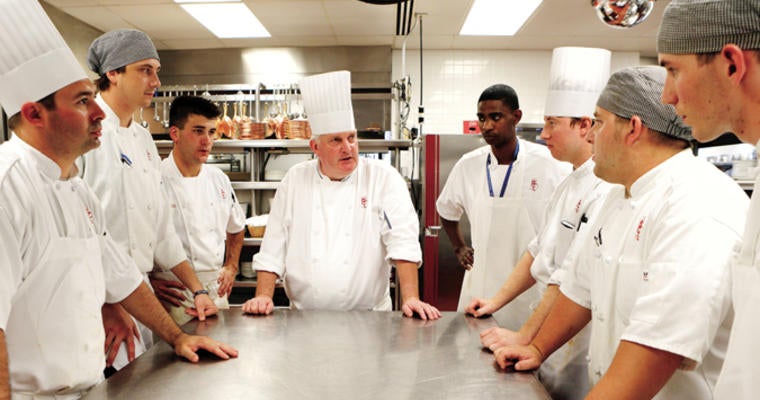A shortage of skilled kitchen workers, which used to be primarily a big-city problem, is spreading across Canada.
Throughout the country, 43% of operators say they are running into problems with kitchen shortages, according to 2015 Restaurants Canada research. By 2030, the association sees a shortfall of 136,000 workers for skilled and unskilled, full-time and part-time workers; chefs and cooks will account for 20,000 of that.
“In a country this size, those are significant numbers,” says Donna Dooher, Restaurants Canada President and CEO.
Several social and political factors have created the shortage in foodservice, which employs 1.1 million people. One is the suspension, in April 2014, of the Temporary Foreign Worker program, which allowed people from other countries to enter Canada to work temporarily.
Dooher also sees demographics playing a part; the population is aging, and younger people have different attitudes toward working in restaurant kitchens. “There are lots of options for people from culinary schools,” including healthcare, she says.
Labour Crunch Forces Changes to Preserve Kitchen Quality
The shortage creates other challenges. Restaurateurs are spending more time recruiting, and thanks to understaffed kitchens, they’re retooling operations.
Dooher and her husband own Mildred’s Temple Kitchen, a 110-seat, farm-to-fork restaurant in Toronto. Dooher says her husband has struggled to find highly skilled cooks. To compensate, Mildred’s is now closed for dinner on Sunday, Monday, and Tuesday, and serves brunch, a profitable daypart, seven days a week. “We are seeing operators get a lot more creative with hours,” Dooher says.
With four midscale full-service restaurants in the United States, TJ Chumps has removed labour-intensive systems to cope with the crisis, says Corporate Managing Partner Blake Wright. The company now buys sliced and shredded cheese, and ready-chopped produce, rather than prepping from raw. It has also scaled down the menu from 60 to 40 items.
The restaurants have also crafted a pay scale that shows workers what steps they must take to earn raises and progress from dishwasher to kitchen manager. Raises are based on a profit-share system. “The more money they are able to make the business because of their skill set, the more money the business can give them,” Wright explains.
Staff Team Building Happens Before, During and After Hiring
By all indications, the foodservice labour shortage will get worse before it gets better. Some factors may intervene, however.
The new government, Dooher says, has made a commitment to work with industries, including the restaurant industry. Canadian restaurateurs also will step up to the challenge. “Operators and restaurateurs are very innovative,” she says. “I think they will come up with another model to satisfy their profit margins.”
The bottom line? Overall, it’s up to restaurateurs to invest more time and effort into recruiting and training, and view workers as vital parts of an operation.
Dan Longton, President and CEO at TraitSet, a Florida-based workforce-management provider, offers suggestions for the four necessities of hiring: Recruiting, selecting, training, and retaining.
Recruit. Run ads, look on websites such as Kijiji,ca and Craigslist.ca, and ask staff for referrals. By all means, post jobs on social media. Other ideas include career days at high schools; and pay particular attention to veterans’ organizations, as veterans tend to have a higher work ethic than the general population, Longton says.
Select. Longton administers a 42-item Work Ethic and Integrity Assessment to prospective hires; about 30% “pass” the assessment, which measures achievement, work ethic, integrity and conscientiousness. Military veterans, Longton adds, pass at double that rate.
Train. Develop a formal training path, even if it’s just a written outline showing what new workers will achieve by what date.
Retain. Millennials (born 1977-1992) respond more positively to a social, interactive environment. “Allow them to play music in the kitchen,” Longton says. And try sketching a career path for new hires. Encourage them to take classes and develop skills, and reward them with incremental pay increases—10 or 20 cents an hour. “If you want to retain employees, that’s what you need to do.”










